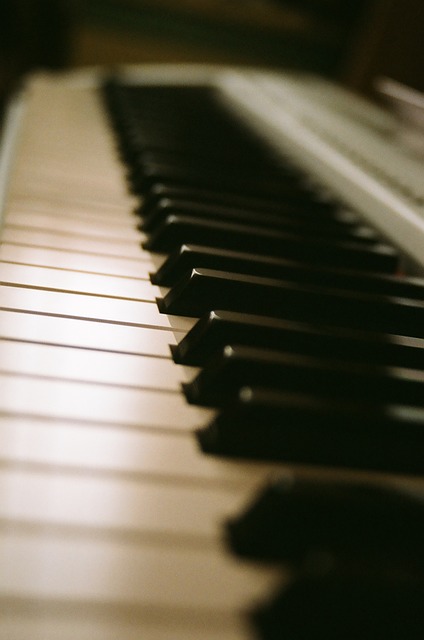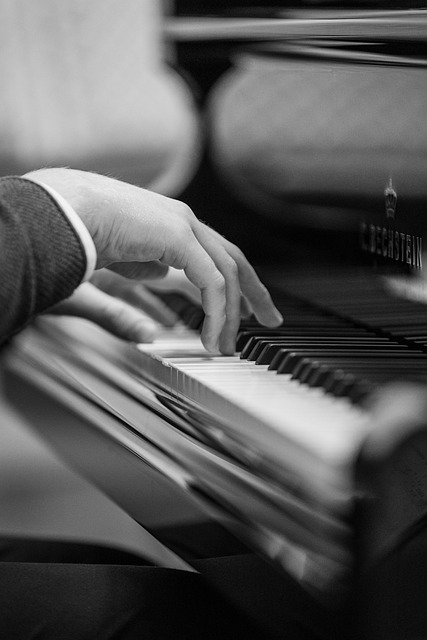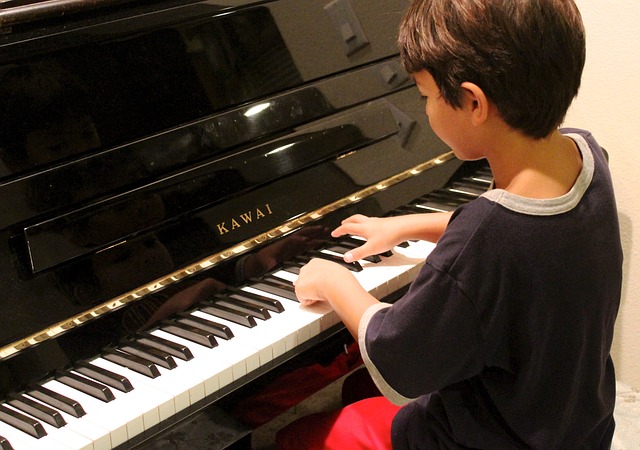Types of Pianos: The piano is one of the most beloved and versatile musical instruments. It can produce a wide range of emotions and fit seamlessly into various musical styles. There are several types of pianos, each with distinct characteristics that make them suitable for different settings and preferences. This article will explore the differences between the most common types of pianos: the grand piano, the upright piano, and the digital piano.
The Grand Piano
History and Origins
The grand piano, or the “concert piano,” is among the oldest and most prestigious pianos. Its design dates back to the early 18th century, with the first models created by Bartolomeo Cristofori, an Italian inventor, around 1700. The grand piano has since evolved, becoming the instrument of choice for many classical composers and professional pianists due to its rich tonal quality and dynamic range.


Design and Construction
The grand piano is characterized by its large, horizontal frame and curved body. Its lid can be opened to enhance sound projection. The strings and soundboard are arranged horizontally, allowing for longer strings and a larger soundboard compared to other types of pianos. This design contributes to its superior sound quality and resonance.
Types of Grand Pianos
There are several variations of grand pianos, each differing in size and purpose:
- Concert Grand: Measuring around 9 feet in length, the concert grand is the most significant type and is typically used in concert halls and professional performances. It offers the most powerful sound and the most comprehensive dynamic range.
- Semi-Concert Grand: Slightly smaller than the concert grand, the semi-concert grand measures between 6 and 7 feet. It is often used in smaller performance venues and studios.
- Parlor Grand: Also known as the “living room grand,” this piano measures between 5 and 6 feet. It is popular for home use due to its balance between size and sound quality.
- Baby Grand: The smallest of the grand pianos, the baby grand, measures between 4 and 5 feet. It is ideal for smaller spaces, offering good sound quality without occupying too much room.
Sound and Playability
The grand piano is renowned for its superior sound quality, rich, whole tone, and wide dynamic range. The horizontal string arrangement allows for longer strings, which produce a more resonant and powerful sound. Additionally, the action mechanism of a grand piano is highly responsive, providing greater control and precision for the pianist. This makes it an ideal instrument for complex and expressive musical pieces.
The Upright Piano
History and Origins
The upright piano, also known as the “vertical piano,” was developed in the early 19th century as a more compact and affordable alternative to the grand piano. Its vertical design made it suitable for smaller spaces, such as homes and classrooms, contributing to its widespread popularity.
Design and Construction
The upright piano features a vertical frame with strings and a soundboard arranged perpendicular to the keyboard. This design allows the piano to take up less floor space than a grand piano, making it a practical choice for domestic settings. The action mechanism in an upright piano is positioned vertically, which influences the touch and response of the keys.
Types of Upright Pianos
Upright pianos come in various sizes, each with its unique characteristics:
- Spinet: The most minor type of upright piano, the spinet measures around 36 to 39 inches in height. It is designed to be compact and affordable, but its smaller size can limit its sound quality and critical action.
- Console: Slightly more significant than the spinet, the console piano measures between 40 and 43 inches in height. It offers improved sound quality and a more responsive action mechanism than the spinet.
- Studio: Studio pianos measure between 44 and 48 inches in height and are commonly used in music schools and studios. They offer a robust sound and a reliable action mechanism, making them suitable for regular practice and teaching.
- Professional: The most significant type of upright piano, the professional model measures over 48 inches in height. It is designed to provide sound quality and action comparable to a grand piano, making it a popular choice for serious musicians.
Sound and Playability
While the upright piano cannot match the grand piano’s sound quality and dynamic range, it offers a respectable tonal richness and volume for its size. The vertical string arrangement and smaller soundboard limit the instrument’s resonance, but advancements in design have significantly improved the sound quality of modern upright pianos. The action mechanism in an upright piano is less responsive than that of a grand piano, but high-quality models still provide satisfactory control and expressiveness for the pianist.
The Digital Piano
History and Origins
The digital piano emerged in the late 20th century as a modern alternative to acoustic pianos. It was developed to address the limitations of traditional pianos, such as size, maintenance, and cost while providing a wide range of features and capabilities. Digital pianos have become popular in various settings, from homes and schools to professional studios and performance venues.
Design and Construction
The digital piano is an electronic instrument that simulates the sound and feel of an acoustic piano. It typically consists of a keyboard with weighted keys to replicate the touch of a traditional piano. The sound is produced using digital sampling technology, where recordings of acoustic pianos are played back through built-in speakers or headphones. Digital pianos often include various features, such as different instrument sounds, recording capabilities, and connectivity options.
Types of Digital Pianos
There are several types of digital pianos, each designed for different purposes and user preferences:
- Portable Digital Piano: These pianos are lightweight and compact, making them easy to transport and store. They are ideal for beginners and musicians who need a portable instrument for practice or performances.
- Console Digital Piano: Designed to resemble an upright piano, the console digital piano features a cabinet-style body with built-in speakers and pedals. It offers a more authentic piano experience and is suitable for home use.
- Stage Piano: Stage pianos are built for live performances and professional use. They are durable and have advanced features like multiple sound presets, effects, and connectivity options. Stage pianos are often used by touring musicians and in recording studios.
- Hybrid Piano: A hybrid piano combines the elements of both digital and acoustic pianos. It features a traditional keyboard action mechanism paired with digital sound production, offering the best of both worlds regarding touch and sound quality.
Sound and Playability
Digital pianos have made great strides in replicating the sound and feel of acoustic pianos. High-quality digital pianos use advanced sampling technology to produce realistic and expressive piano sounds. Some models even include features such as graded hammer action, miming the weighted feel of an acoustic piano’s keys. Additionally, digital pianos offer various benefits, such as volume control, headphone connectivity for silent practice, and switching between different instrument sounds.


Critical Differences Between Grand, Upright, and Digital Pianos
Size and Space
One of the most apparent differences between the types of pianos is their size and space requirements. Grand pianos, with their large, horizontal frames, require significant floor space and are typically found in concert halls, large homes, and studios. With their vertical design, Upright pianos are more compact and can fit into smaller spaces, making them suitable for homes, classrooms, and smaller performance venues. Digital pianos vary in size, with portable models being the most compact and console models resembling upright pianos in terms of space requirements.
Sound Quality and Resonance
Grand pianos are renowned for their superior sound quality and resonance, thanks to their horizontal string arrangement and larger soundboard. They produce a rich, whole tone and offer a wide dynamic range, making them ideal for expressive and complex musical pieces. Upright pianos, while more limited in resonance due to their vertical design, still offer good sound quality for their size. Digital pianos, on the other hand, use digital sampling technology to replicate the sound of acoustic pianos. While they may not fully match the acoustic resonance of a grand or upright piano, high-quality digital pianos can produce realistic and expressive sounds.
Touch and Playability
The touch and playability of a piano are crucial for the pianist’s control and expressiveness. Grand pianos offer the most responsive action mechanism, allowing for precise control and a wide dynamic range. Upright pianos have a less responsive action due to their vertical design, but high-quality models still provide satisfactory control for most pianists. Digital pianos vary in touch and playability, with some models featuring graded hammer action to mimic the feel of an acoustic piano. While digital pianos may not fully replicate the touch of a grand or upright piano, they offer various features and benefits, such as adjustable touch sensitivity and different keyboard modes.
Maintenance and Durability
Acoustic pianos, including grand and upright pianos, require regular maintenance to ensure optimal performance. This includes tuning, regulation, and occasional repairs. The strings and hammers in acoustic pianos are subject to wear and tear, and the wood components can be affected by changes in humidity and temperature. Digital pianos, in contrast, require minimal maintenance, as they do not have strings or hammers. They are also less susceptible to environmental factors, making them a durable and low-maintenance option for many musicians.
Cost and Affordability
The cost of a piano can vary significantly depending on the type, brand, and quality. Grand pianos are generally the most expensive, with concert grands costing tens of thousands. Upright pianos are more affordable, with prices ranging from a few thousand to several thousand dollars, depending on the size and quality. Digital pianos offer various price points, from budget-friendly portable models to high-end hybrid pianos. The affordability of digital pianos makes them an attractive option for beginners and those on a budget.
Features and Versatility
Digital pianos offer a variety of features that are not available in acoustic pianos. These include different instrument sounds, built-in metronomes, recording capabilities, and connectivity options for computers and other devices. Some digital pianos offer educational features, such as built-in lessons and interactive tutorials. This versatility makes digital pianos a popular choice for modern musicians who value their additional features and convenience.
Conclusion:
In summary, the grand, upright, and digital piano have unique characteristics and advantages. The grand piano is celebrated for its superior sound quality, rich resonance, and responsive action, making it the instrument of choice for professional pianists and concert performances. The upright piano offers a more compact and affordable option for homes, classrooms, and smaller performance venues. The digital piano provides a modern alternative with various features, minimal maintenance, and a range of price points, appealing to beginners and tech-savvy musicians.
Choosing the correct type of piano ultimately depends on individual preferences, needs, and circumstances. Whether you seek the traditional elegance of a grand piano, the practical versatility of an upright piano, or the innovative features of a digital piano, there is a piano out there to suit every musician’s requirements.
